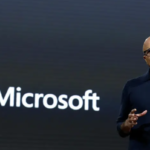Title: Uncontrolled Space Exploration Threatens the Ozone Layer and Weather Patterns, Study Finds
Subtitle: Growing Concerns Over Incidental Introduction of Toxic Metals into the Stratosphere
Date: [Current Date]
By Pierre Herubel
The battle against climate change has led scientists to explore various strategies to keep global warming below 1.5°C. One such strategy involves injecting aerosols into the stratosphere to enhance its sun-reflecting ability. However, the uncertainties surrounding this technique have made scientists cautious about its practical implementation. Interestingly, the recent surge in space exploration activities is unintentionally contributing to a similar issue, but in an uncontrolled and potentially harmful manner.
With advancements in technology and increasing private interest, space missions have seen a significant rise in recent years. Many rockets are now being returned to Earth for reuse, and projections indicate that by 2030, we could introduce up to 50,000 additional satellites into our orbit. While this trend presents its own challenges in terms of space debris, it also raises concerns about the introduction of toxic metals into the stratosphere during frequent launches and reentries.
Meteorites regularly burn up in Earth’s atmosphere, leaving behind traces of material in our skies. However, there has been a noticeable change in the composition of these “meteoritic particles” in the atmosphere, which has raised concerns among scientists. A recent study identified high concentrations of metals, including lithium, aluminium, copper, and lead, in the stratosphere. The ratios of these metals closely resemble those found in spacecraft alloys, suggesting that rockets are the primary contributors to this troubling trend.
The implications of this phenomenon go beyond the presence of toxic metals in the stratosphere. The stratosphere is home to the ozone layer, a crucial shield against cancer- and cataract-inducing UV radiation. Chemical interactions within the stratosphere ensure that the ozone layer absorbs UV rays and transforms them into heat, playing a vital role in regulating global weather patterns. Any significant alteration in the ozone layer can have far-reaching effects on weather patterns worldwide, including the behavior of jet streams that influence phenomena such as monsoon seasons.
While the issue of the ozone hole caused by chlorofluorocarbon emissions has been partially mitigated in certain regions, the growing presence of spacecraft metals in the stratosphere raises concerns about the layer’s integrity. The study revealed that nearly 10% of the significant sulphuric acid particles responsible for sustaining the ozone layer are now tainted by these metals, posing an unknown threat. If space exploration continues to gain popularity, this threat could potentially escalate to as much as 50% in the coming decades.
Given the gravity of the situation, it is imperative that we investigate these stratospheric interactions and take measures to safeguard the ozone layer, similar to the actions taken in the past. Protecting the layer is essential for the safety and well-being of humans and all life forms on our planet.
In conclusion, while scientists continue to explore innovative strategies to combat climate change, it is crucial to address the unintended consequences of uncontrolled space exploration. By understanding and mitigating the risks posed by the introduction of toxic metals into the stratosphere, we can safeguard the ozone layer and preserve the delicate balance of our planet’s weather patterns.

I have over 10 years of experience in the cryptocurrency industry and I have been on the list of the top authors on LinkedIn for the past 5 years. I have a wealth of knowledge to share with my readers, and my goal is to help them navigate the ever-changing world of cryptocurrencies.










